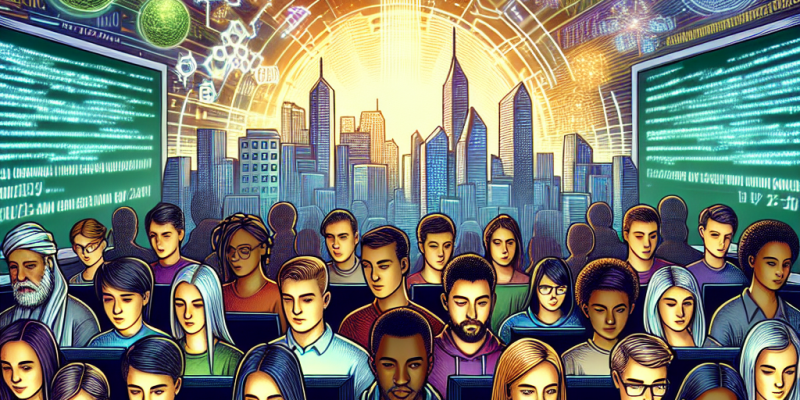Cybersecurity Skills Gap: Preparing the Next Generation by 2025

As we move deeper into the digital age, cybersecurity has become more critical than ever. However, there is a significant skills gap in the cybersecurity workforce that needs urgent attention. Recent data in 2025 shows that the demand for skilled cybersecurity professionals is increasing rapidly, while the supply is not keeping pace. This article explores the current state of the cybersecurity skills gap and discusses how we can prepare the next generation of professionals to meet this demand.
Understanding the Cybersecurity Skills Gap
The cybersecurity skills gap refers to the difference between the number of job openings in the field and the number of qualified candidates available to fill those positions. Today, many organizations face difficulties in finding employees who have the right skills and experience in cybersecurity. According to recent reports, there are over 3 million unfilled cybersecurity positions worldwide. This shortage makes it challenging for companies to protect their systems and data from cyber threats.
Why is There a Skills Gap?
Several factors contribute to this skills gap:
-
Rapidly Evolving Technology: Cyber threats are constantly evolving. As new technologies emerge, so do new vulnerabilities. This makes it harder for educational programs to keep up with what is needed in the industry.
-
Lack of Awareness: Many young people are unaware of career opportunities in cybersecurity. Without proper guidance and education, they may not consider it as a career path.
-
Insufficient Training Programs: Not all educational institutions provide robust cybersecurity training. This gap in education can leave graduates unprepared for real-world challenges.
Preparing the Next Generation
To bridge this skills gap, it is essential to take proactive steps to prepare the next generation for careers in cybersecurity. Here are some strategies that can help:
1. Enhance Educational Programs
Educational institutions need to update their curricula to include the latest trends and technologies in cybersecurity. This can involve incorporating hands-on training, labs, and simulations that mimic real-world cyber threats. Partnerships between schools and industry leaders can also provide valuable insights into current needs.
2. Increase Awareness and Interest
Creating awareness about cybersecurity as a career can inspire young people to pursue it. Schools can host workshops, seminars, and competitions to engage students. Programs that allow students to meet industry professionals can provide them with valuable networking opportunities and insights.
3. Foster Diversity in Cybersecurity
Encouraging diversity in the cybersecurity field is vital. Women, minorities, and underrepresented groups often face barriers to entering technology fields. By promoting inclusive initiatives, such as scholarships and mentorship programs, we can attract a wider range of candidates to cybersecurity careers.
4. Provide Certification Pathways
Certification programs can help individuals gain the specific skills needed in cybersecurity. These programs are often shorter than traditional degrees and can quickly equip students with practical skills. The industry must work with training organizations to ensure these certifications are recognized and valued.
5. Continuous Learning and Development
Cybersecurity is a field that requires ongoing education due to its dynamic nature. Professionals must be encouraged to pursue continuous learning opportunities, such as workshops, online courses, and conferences, to stay current with industry developments.
Conclusion
The cybersecurity skills gap presents a significant challenge, but it also offers an opportunity to prepare the next generation for a rewarding and impactful career. By enhancing educational programs, increasing awareness, promoting diversity, providing certification pathways, and encouraging continuous learning, we can equip young professionals with the skills they need to secure our digital future. As we look toward 2025, it is crucial that we take these steps now to ensure that we have a skilled workforce ready to face the cybersecurity challenges of tomorrow.














